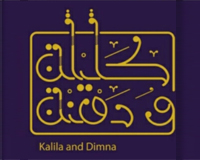Contact Center
.
08 September 2015
Kalila wa Dimna to Celebrate World Literacy Day


Bahrain National Museum’s current exhibition, ‘Kalila wa Dimna: Fables Across Time’, organized to spread cultural and historical values, celebrated World Literacy Day on 8 September 2015. Children and their families enjoyed a full day of fun and reading activities.
The ‘Kalila and Dimna, Fables Across Time’ exhibition offered a special reading corner from 11am-6pm from ages 6 to 14 years- old. In addition, children and their parents enjoyed a walk through our entire Kalila and Dimna Exhibition and learned about animal-myths and their history. A stop at Darseen Cafe for a taste of the special kids menu was an additional treat.
Visitors of the exhibition enjoyed the rich medieval culture revealed of rare illuminated manuscripts from Kalila and Dimna, an 8th century Panchatantra collection of Indian fables from India to Spain and beyond. The exhibits shown include significant Qur’anic manuscripts, the most excellent samples of Arabic book art like the celebrated Cosmography of Qazwini and Kalila wa-Dimna, superbly illuminated Persian and Ottoman manuscripts, the world-famous Babylonian Talmud, and important examples of Armenian book illumination. A remarkable item in the exhibition is an extremely rare Ottoman paper cut-out manuscript. It is an interactive exhibition using stories from the famous collection of fables, Kalila wa Dimna, bringing to life the characters, their relationships and lessons.
‘Kalila wa Dimna: Fables Across Time exhibit’, which was created in a partnership between The Children’s Museum of Indianapolis and the Bahrain National Museum, is a startling combination of text, multi-media, and a live musical score. This modern theatrical fable is a timely exploration of the mechanics of an empire and the narratives of power, providing a passionate argument for cultural and religious tolerance in the modern Arab and Western worlds. The fables address the moral education of princes through two jackals, Kalila and Dimna, and a host of animal protagonists, but they are more than just a mirror for princes. They illustrate universal human strengths and weaknesses, as well as aspirations for justice and truth.







